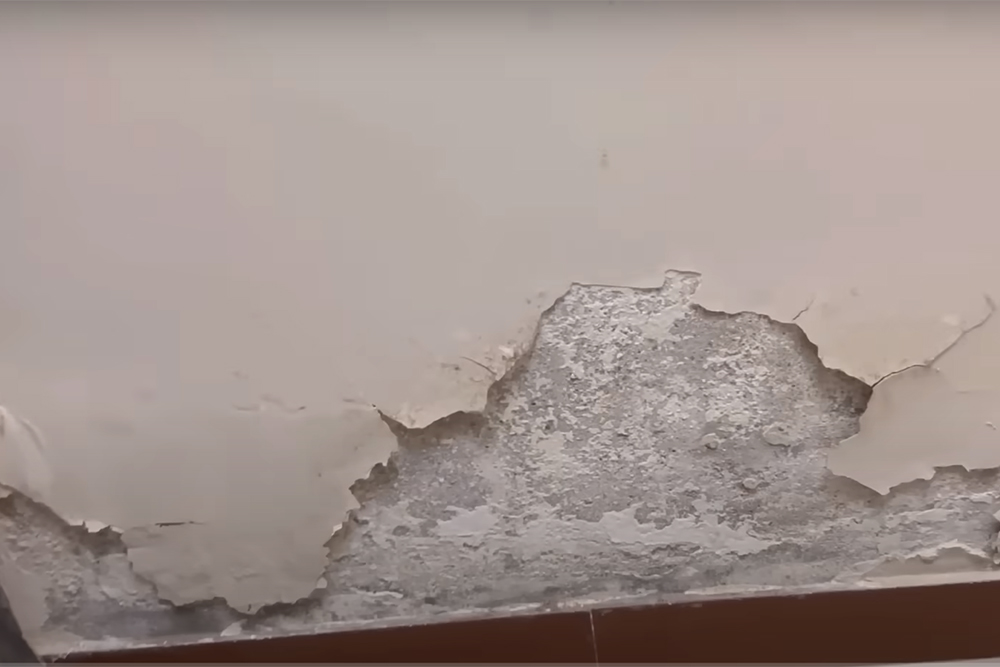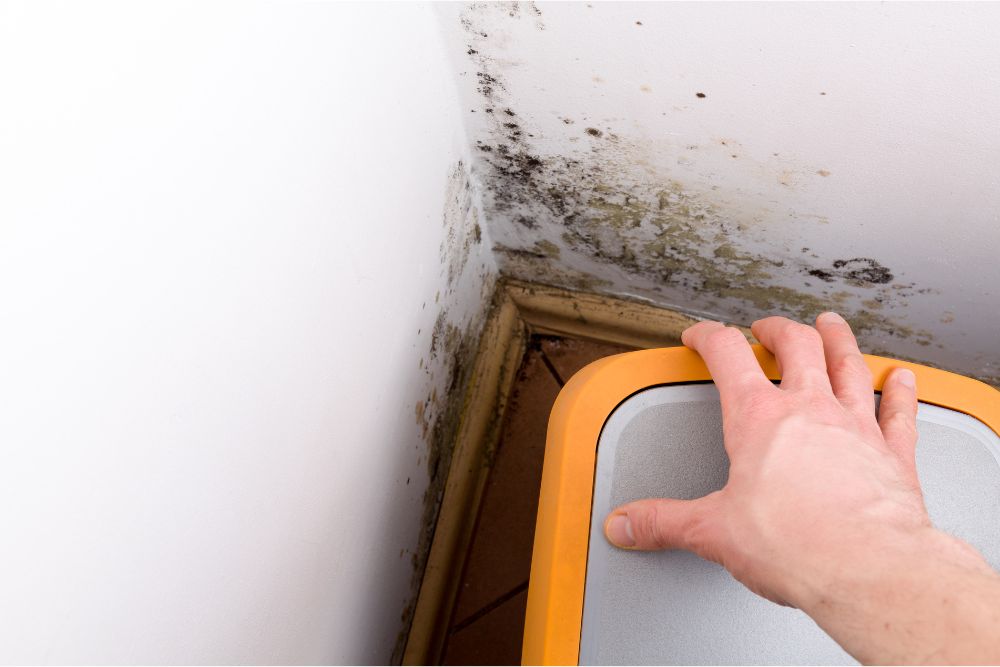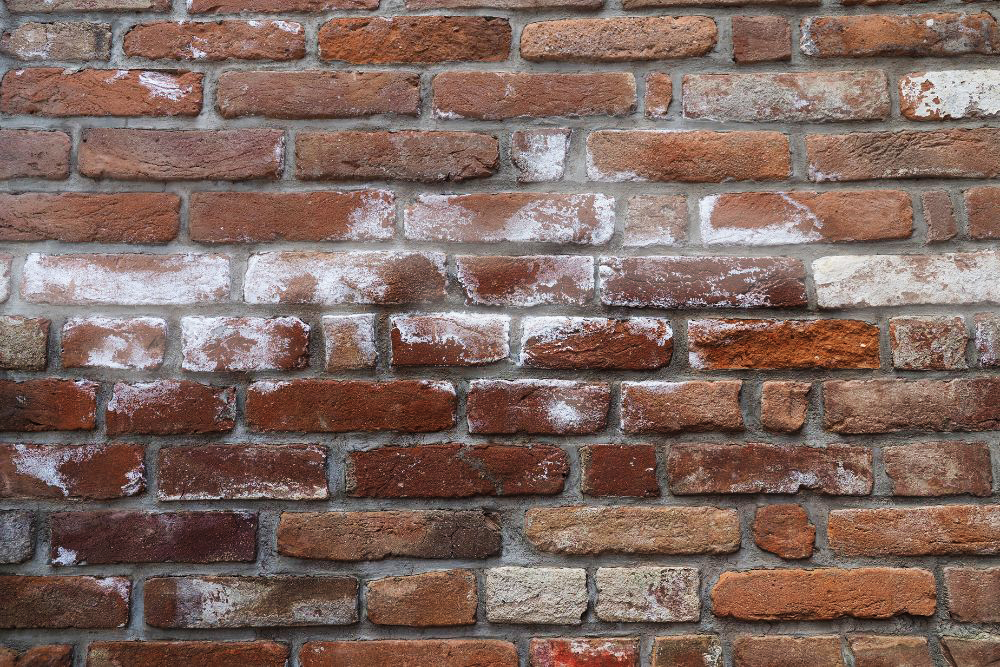
Salt damp is a pervasive issue that affects numerous buildings, particularly those with older construction techniques. In this guide we will give you an all-encompassing analysis of salt damp, exploring its causes, identifying signs, and discussing potential remedial actions.
Furthermore, we will delve into the health risks, dangers associated, and the timeframe of its appearance. We will also discuss the financial aspects, including treatment costs and the stance of insurance companies on covering such damages.
Our objective is to equip you with essential knowledge about salt damp, assisting in its timely detection and effective management in your building.
So, What Is Salt Damp?
Salt Damp, often known as rising dampness, refers to the destructive phenomenon where salts and moisture rise from the ground into the porous building materials, causing significant structural damage. This hygroscopic salt draws moisture from the air, compounding the issue by further wetting the structure.
Commonly seen in older constructions, salt damp is a result of ineffective or non-existent damp-proof courses. The salts in question are largely nitrates and chlorides, which are soluble in water and thus easily transported by it. These salts crystallize in the pores of the building material—typically stone or brick—and the expansion that occurs during this crystallization exerts pressure on the surrounding material, leading to fractures, crumbling, and ultimately, structural instability.
Furthermore, the persistent moisture provides a conducive environment for the growth of moulds and fungi, creating not only a visual eyesore but also potential health hazards. The aesthetic devaluation coupled with the structural hazards makes salt damp a costly issue to rectify.
Therefore, early detection and intervention are crucial in preserving the integrity and longevity of a building affected by salt damp.
What Causes Salt Damp?
The primary cause of salt damp is the capillary action of groundwater high in soluble salts, which is absorbed and transported into the porous building materials. This phenomenon commonly occurs in older structures, particularly those built without suitable damp-proof courses, or when the existing ones have deteriorated over time.
The soluble salts in the groundwater, which primarily consist of nitrates, chlorides, and sulphates, are hygroscopic. This means they have the ability to attract and hold water molecules from the surrounding environment. When these salts are deposited into the building materials like brick, stone, or mortar through the capillary action, they retain moisture. This results in a persistent damp condition, typically observed as a damp patch or tide mark on walls, hence the term ‘salt damp’.
Additionally, environmental factors such as high rainfall, poor drainage, and low evaporation rates can exacerbate the issue, facilitating the rise of dampness. Inadequate sub-floor ventilation, allowing damp air to stagnate under the building, can also contribute to salt damp.
Lastly, inappropriate renovations or alterations that disrupt the existing moisture equilibrium of the building can trigger or worsen salt damp.
What Does Salt Damp Look Like?

Upon first inspection, you may notice salt damp as a distinct tide mark on the lower sections of your interior or exterior walls, indicative of a persistent moisture problem. This unsightly sign is just the tip of the iceberg, with the condition often leading to more severe structural issues if left untreated.
To further recognize salt damp, consider the following visual indicators:
- Discoloration: Moisture absorbed from the ground often carries mineral salts, causing a white, crystalline deposit on your walls. This chalky substance is a key sign of salt damp.
- Wall Degradation: Salt damp can cause the plaster and masonry to crumble, leading to severe wall deterioration.
- Mould and Mildew: The persistent dampness creates a conducive environment for mold and mildew growth. These fungal infestations not only mar your walls but also pose health risks.
- Efflorescence: This term refers to the formation of salt deposits on the surface of materials like concrete and brick. It appears as a powdery, white substance on the affected areas.
Understanding these signs can help you take timely action to address salt damp, protecting your home’s integrity and your family’s health.
How Long Does Salt Damp Take to Appear ?
Over time, the manifestation of salt damp in a structure can vary widely, typically taking anywhere from several months to years to become visually apparent. This variability is predominantly dictated by environmental factors such as humidity, temperature, and the level of salt in the soil, along with the construction materials and techniques used in the building.
It is essential to remember that the time frame for salt damp to appear is not an indicator of its severity. Even if the signs of salt damp appear later, it does not mean the damage is minor. Conversely, early detection does not necessarily signal an extensive problem.
Detection can be complicated as initial symptoms are often subtle and easily overlooked. These may include a slight discolouration or dampness on walls, or a white, powdery residue – commonly known as efflorescence.
Preventive measures and regular inspections are key in managing salt damp. If left untreated, the damage will progress, leading to more serious structural issues. Thus, irrespective of the time it takes for salt damp to appear, immediate action upon identification is crucial to safeguard the integrity of your property.
How to Fix Salt Damp
Addressing salt damp is a crucial aspect of maintaining the structural integrity of a building. This section will explore effective techniques to eliminate salt damp from internal walls, repair bricks damaged by salt damp, and treat salt damp on concrete slabs.
We will also consider the possibility and practicality of DIY solutions in tackling this common building issue.
How to Remove Salt Damp From Internal Walls
In dealing with salt damp, especially on internal walls, it is crucial to first identify the extent of the problem before embarking on any treatment process. The indications of salt damp include blistering paint, crumbling plaster, and a white powdery substance on your walls.
- Assessment: Engage a professional to assess the severity of the dampness and the source of the moisture.
- Damp-Proofing: Install a damp-proof course (DPC) to prevent moisture from rising up the walls.
- Re-plastering: Remove the affected plaster and re-plaster with a salt-resistant product.
- Monitoring: Keep a close eye on the treated areas for any signs of recurring dampness.
Addressing salt damp promptly can prevent structural damage and improve your home’s health and longevity.
How to Repair Salt Damp Damaged Bricks

Following the necessary steps to treat salt damp on internal walls, it’s equally important to address the repair of bricks damaged by salt damp for a comprehensive solution.
Start by cleaning the affected area with water and a hard brush, and allow it to dry.
Next, apply a salt neutraliser product to the bricks and let it dry completely.
Then, apply a waterproofing render to seal the brickwork and protect it from further damage.
Finally, replicate the original brickwork by applying a suitable finish.
Regularly monitor the area for recurrence of salt damp.
If the damage is severe or widespread, engaging a professional to assess and repair the damage is recommended.
How to Fix Salt Damp On a Concrete Slab
Regularly encountered in older buildings, salt damp can cause significant damage to concrete slabs and thus requires prompt and effective treatment to prevent further deterioration. Fixing salt damp on a concrete slab involves several steps:
- Identify the Source: First, identify the source of the moisture contributing to the salt damp. It could be from soil, groundwater, or even a leaking pipe.
- Remove the affected area: Remove the damaged concrete and underlying soil to prevent further absorption of moisture.
- Apply a Damp Proof Course (DPC): This should be installed at the base level of the slab to act as a barrier against moisture.
- Replace the Concrete Slab: Finally, replace the removed concrete with a new, damp-resistant mixture, ensuring the slab is properly sealed.
Can You DIY Salt Damp?
While it is feasible for homeowners to address minor instances of salt damp themselves, more severe cases often necessitate the expertise of a professional damp specialist. Successfully treating salt damp involves identifying the source of moisture, eliminating it, and then repairing the affected areas.
DIY approaches might include improving ventilation, installing damp-proof courses, or applying salt-resistant plaster. However, diagnosing the precise cause and extent of salt damp can be complex, and incorrect treatment can exacerbate the problem.
In the case of widespread or recurring damp, a specialist will be equipped with the necessary tools and knowledge to provide a comprehensive solution. Thus, while DIY is possible, professional intervention is often advisable.
Is Salt Damp Treatment Covered By Insurance?
In terms of insurance coverage, it is crucial to understand that not all policies include provisions for salt damp treatment. The extent of protection for homeowners depends largely on the specific terms and conditions outlined in the individual insurance agreement.
To evoke a deeper understanding, consider these four points:
- Policy Exclusions: Most standard home insurance policies do not cover salt damp damage as they often categorize it under ‘gradual damage’, which is typically excluded.
- Prevention and Maintenance: Insurance companies expect homeowners to maintain their properties diligently. If a salt damp issue arises due to lack of maintenance, it might not be covered.
- Claims and Investigations: If you notice signs of salt damp and intend to make a claim, expect your insurer to conduct a thorough investigation. If they determine the dampness was preventable, the claim could be denied.
- Specialised Coverage: Some insurance providers may offer additional coverage options for salt damp at an extra cost.
Is Salt Damp Bad For Your Health?
Salt damp, though primarily a structural concern, can also pose significant health risks to inhabitants of the affected property. This health hazard stems from the mould and mildew that thrive in the damp conditions created by salt damp. Exposure to these fungal organisms can lead to respiratory problems, especially for individuals with existing conditions like asthma or allergies.
Moreover, salt damp fosters the growth of dust mites, which can also contribute to respiratory distress, itching, rashes and other skin issues. In severe cases, exposure to the damp and mould can lead to serious conditions like bronchitis or pneumonia.
Prolonged exposure to salt damp and its accompanying mould spores can also lead to chronic conditions, such as hypersensitivity pneumonitis – an inflammation of the lungs. It’s important to keep in mind that these health risks can pose a particular threat to young children, the elderly, and those with compromised immune systems.
Is Salt Damp Dangerous?
Undoubtedly, salt damp poses a significant danger not only to the structural integrity of buildings but also to the health of its occupants. This hazard manifests in various ways, some of which are not immediately noticeable, making it a silent destroyer of homes and commercial structures.
- Structural Damage: Salt damp deteriorates building materials, notably brick, stone, and mortar. It leads to crumbling walls, peeling paint, and rotting woodwork, causing costly repairs and reducing property value.
- Health Risks: Salt damp fosters the growth of mold and fungi, which can lead to allergies, respiratory problems, and other health issues for occupants, particularly those with pre-existing conditions.
- Unseen Dangers: Unlike other forms of damage, salt damp is not always visually apparent until the damage is extensive. It silently eats away at the structure, posing significant risks.
- Financial Implication: The cost of remediation can be substantial, especially if salt damp is detected late. This can lead to financial stress for homeowners.
In essence, the danger of salt damp extends beyond the immediate physical damage. It’s a silent, costly, and potentially health-impacting issue that requires prompt attention and proper mitigation.
How Expensive Is It to Get Salt Damp Treatment?
The cost of treating salt damp can vary greatly, largely depending on the extent of the damage, the size of the property, and the methods used for treatment. On average, homeowners can expect to pay anywhere from $1,500 to $5,000 for professional treatment, though costs can escalate for larger or more severely affected properties.
To provide some perspective, consider the following points:
- The $1,500 to $5,000 range typically covers minor to moderate cases of salt damp. This includes the cost of professional assessment, materials, labour, and any necessary follow-up visits.
- Severe cases, where large sections of a home are affected, may push costs upwards of $10,000. This is due to the increased labour and materials required.
- Finally, keep in mind that the cost of not treating salt damp can be far higher. Left untreated, salt damp can cause serious structural damage, potentially resulting in tens of thousands of dollars in repair costs.
Investing in treatment early will therefore save you money in the long run.
Frequently Asked Questions
Can Salt Damp Occur in Any Geographical Location?
Salt damp, a phenomenon primarily associated with moisture and salt absorption, can potentially occur in any geographical location. However, it is more prevalent in areas with high soil salinity and moisture levels.
What Materials Are More Susceptible to Salt Damp?
Materials more susceptible to salt damp include porous construction elements such as brick, sandstone, and mortar. These absorb moisture from the ground, allowing salts to crystallize and cause persistent dampness and structural damage over time.
Is There Any Preventive Measure to Avoid Salt Damp?
Yes, preventive measures for salt damp include proper ventilation, use of damp-proof courses, and regular maintenance checks. Additionally, avoiding the use of salt-rich materials in construction can also help prevent salt damp.
How Often Should You Inspect Your Home for Signs of Salt Damp?
To ensure optimal protection, it is advisable to inspect your home for signs of salt damp at least twice a year. Seasonal changes, particularly autumn and spring, are ideal times due to related environmental factors.
Can Salt Damp Affect the Structural Integrity of a Building?
Yes, salt damp can significantly affect the structural integrity of a building. It can cause mortar erosion, weakening of structural materials, and increased susceptibility to further damp issues, potentially leading to serious structural damage.
Conclusion
In conclusion, salt damp poses a significant risk to the structural integrity of buildings and potentially, human health. Timely identification and treatment are crucial to mitigate these risks.
However, the high cost of remediation and the potential lack of insurance coverage can be a deterrent. Therefore, understanding the causes and signs of salt damp is essential for homeowners to avoid expensive repairs and potential health hazards.
If you need help either assessing potential salt damp, or treating existing salt damp, we can help.
As specialists in salt damp, we are able to professionally assess and repair any salt damp related problems. Speak to us today by calling 0432 899 026 or emailing info@smrbuilders.com.au.